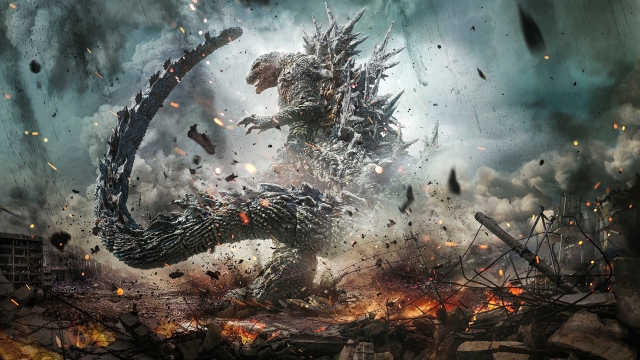Across 38 films, Godzilla has toppled the skyscrapers of Tokyo, battled fellow giants like King Kong and Mothra, and destroyed countless modern landmarks around the world.
Introduced in 1954, the giant monstrous lizard was the first of the "kaiju" — a subgenre of science fiction cinema referring to the giant monsters that devastate major cities.
"They're popularly remembered for, of course, their low budgets, special effects and rubber monsters," said entertainment writer Eric Francisco. "But there is a craft and artistry into those movies."
The latest entry into the franchise, "Godzilla Minus One," is being hailed by many critics as the best kaiju film in years.
"The film has the heart of a Spielberg movie with all the technical prowess of what makes a great giant monster movie," said filmmaker and podcaster Justin Quizon.
"'Minus One' restores the towering fear that Godzilla is meant to strike as this otherworldly creature who reminds us that our life and our ecosystem is very delicate and very fragile," said Francisco.
With a 97% rating on Rotten Tomatoes based on more than 100 official critic reviews, Francisco and Quizon say "Minus One" is emotionally driven by its post-WWII depiction of Japan. That's what the title refers to — a devastated country still recovering from the destruction of the nuclear bomb.
SEE MORE: 'Godzilla vs. Kong' Is Biggest Debut Since Last March
The film has been praised for its heartfelt humanity, and the way it brings the franchise back to its deeply political roots.
It stands in stark contrast from some past kaiju films, which have been better known for their fantastical action-driven spectacles rather than their stories. Especially among North American audiences, where Godzilla doesn't have the same historical resonance, the older titles of the franchise are also sometimes seen as campy.
Quizon said, "I think Western eyes have been slowly kind of like remembering Godzilla as the concept and not Godzilla as the joke."
Fans in the U.S. today are much more aware of the metaphor behind the monster.
"[Godzilla] is an avatar for the nuclear annihilation that the atomic bombs proposed. The reason why he is a scaly lizard monster is to reflect the burns that the survivors of the atomic bombs had on their skins. He has atomic breath to reflect the atomic blast of the radiation," said Francisco.
Even the fact that Godzilla rises from the sea is inspired by the history of the U.S. military tests in the ocean, specifically in Bikini Atoll.
"It's like we've poisoned our waters," said Francisco. "We've poisoned our ecosystem."
Francisco and Quizon say "Minus One" can appeal to audiences who have never seen a Godzilla film.
"I feel like the reason it's doing so well in the States, and why it's doing so well for American eyes — and why they're extending [the theatrical release] — is that the movie is so easy to understand for our movie tastes," said Quizon.
"The work is powerful enough to cut through that noise and appeal to them even if they can't relate to being bombarded by nuclear bombs," said Francisco. "They can understand what it means to sacrifice, to love someone so much that you're willing to do whatever it takes."
Trending stories at Scrippsnews.com



